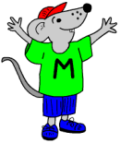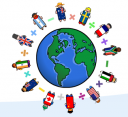Brighten up the ocean! The next in our colouring series. It’s now time to explore the underwater world and colour 10 fish. Just as before, it’s one click for red, two clicks for blue and three clicks for gold.
[flash http://mathsblog.co.uk/wp-content/uploads/2008/03/colour10fish1.swf]
 The first in our subtraction worksheets. Pure and simple subtraction of numbers less than 10. No number lines or pictures to count. Just two worksheets with ten sums each.
The first in our subtraction worksheets. Pure and simple subtraction of numbers less than 10. No number lines or pictures to count. Just two worksheets with ten sums each. Some quick revision of addition, working all answers out ‘in your head’.
Some quick revision of addition, working all answers out ‘in your head’. Another worksheet with a ‘wheel’ of questions to practise subtraction of whole tens. year 5’s should find this quite easy and it is worth considering what approach they take to finding all the possible questions.
Another worksheet with a ‘wheel’ of questions to practise subtraction of whole tens. year 5’s should find this quite easy and it is worth considering what approach they take to finding all the possible questions. Here’s a very straight forward little revision for children to practise their counting on in the hundreds. In Year 3 many children will still be using their fingers to count on whilst others will be learning to add the number using the facts they already know. As most of these questions cross the next tens boundary this is not so easy.
Here’s a very straight forward little revision for children to practise their counting on in the hundreds. In Year 3 many children will still be using their fingers to count on whilst others will be learning to add the number using the facts they already know. As most of these questions cross the next tens boundary this is not so easy.